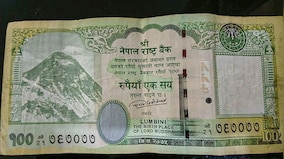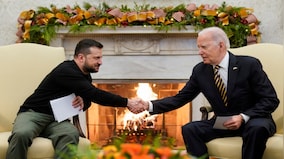In late 2023, China created a new 31.5 million-barrel strategic oil storage facility at the eastern Chinese port of Dongying. The heavy purchases of Russian crude oil have found their place there. Is it hedging for a future oil price surge or building stocks for a future conflict is being speculated. China currently holds roughly 511 million barrels of Strategic Petroleum Reserve (SPR), which corresponds to less than 50 days of Chinese petroleum imports.
Petroleum products continue to be strategic assets that are still the drivers of all transportation, significant electricity production, and many industrial processes. Petroleum and gas reserves are nature’s blessing to only a few select regions of the world. Most large economies in Europe, China, Japan, and India, among others, are major importers of petroleum products.
Global strategic petroleum reserves refer to crude oil inventories (or stockpiles) held by the government of a particular country, as well as private industry, to safeguard the economy and help maintain national security during an energy crisis. Strategic reserves are intended to be used to cover short-term supply disruptions.
Global Events and Supply Chain Crisis
The Ukraine war once again emphasised the need for logistic supply chain management and how disruptions can upset any country’s strategic and tactical intentions. They also impact the day-to-day lives of the citizens. The disruption of electric power, petrol, and gas in winter 2022 in Europe and Ukraine was severe.
American sanctions on Iranian and Russian oil have greatly upset demand and supply dynamics. The Organisation of Petroleum Exporting Countries (OPEC) often operates as a cartel to control production and thus influence prices. There is thus a need for all importing nations to not only broaden the basket of sourcing countries but also to build their own strategic storage capacities.
Global Petroleum Reserves
The world consumes roughly 100 million barrels of crude oil per day. This translates to 36.5 billion barrels per year. The proven global oil reserves currently are nearly 1,650 billion barrels, and that will last nearly 45 years. For the last one decade there has been no addition to known oil reserves. Major countries with percentages of reserves are Venezuela (18.2 per cent), Saudi Arabia (16.2 per cent), Canada (10.4 per cent), Iran (9.5 per cent), Iraq (8.7 per cent), Kuwait (6.1 per cent), UAE (5.9 per cent), Russia (4.8 per cent), Libya (2.9 per cent), United States (2.1 per cent), China (1.5 per cent), India (0.29 per cent), and Pakistan (0.021 per cent), among many others.
Global Strategic Petroleum Reserves
The International Energy Agency (IEA), a group of 31 countries, requires members to hold strategic reserves equal to 90 days of the previous year’s net imports, though commercial stockpiles can be included in that total. Only net-exporter members of the IEA are exempt from this requirement. The forward commercial storage agreements allow oil-exporting countries increased flexibility in commercial storage and allow petroleum to be stored within an oil-importing country. Such reserves remain technically under the control of the oil-exporting country.
In 2022, approximately 4.1 billion barrels of oil were held in strategic reserves by IEA member states, of which 1.4 billion were government-controlled and the remainder were held by private industry. The US, China (non-IEA member), and Japan are leading crude oil consumers and maintain the largest SPR. Many other non-IEA countries have started working on their own SPR.
China’s Strategic Petroleum Reserves
China has the second largest storage, at 511 million barrels. China’s daily consumption is around 12 million barrels of crude. Thus, their SPR is equivalent to between 40 and 50 days of imports. China eventually wants to raise the figure to 90 days of reserve. Russia has been the major supplier to China of late, contributing as much as 2.14 million barrels per day, overtaking Saudi Arabia. Russian oil was substantially discounted due to Western sanctions. Stockpiling partly insulates Beijing from the supply chain and pricing dynamics. Also, larger stocks will be required for a possible Taiwan Strait conflict that could result in a military blockade or economic or trade sanctions. China has also secured supply chains through pipelines from Russia, the trans-Myanmar oil and gas pipeline, and from central Asia, predominantly Turkmenistan.
Simultaneously, China is rapidly shifting to electric vehicles and is not only building lithium stocks for batteries but has also acquired processing facilities and mines, including overseas. Investment bank UBS estimates that China might control a third of all global lithium supplies by 2025.
US Strategic Reserves
The US SPR is the world’s largest, with an authorised maximum capacity of 727 million barrels. The reserves are kept in salt caverns located at different locations along the Texas and Louisiana Gulf Coasts. The US consumed an average of about 20.01 million barrels of petroleum per day. It was a net petroleum exporter of 1.64 million barrels per day in 2023. It thus has the capacity to play around with the SPR. The US government has historically tapped into its SPR following man-made accidents, economic crises, and natural disasters, though it has also sold and loaned crude oil from the SPR to other nations at times.
Other Major SPR Holders
Japan held SPR equivalent to 133 days of crude oil imports in early 2022. That amounts to 332 million barrels based on the country’s average monthly imports in 2021. Commercial stocks amounted to 86 days of imports. Japanese SPR storage is spread across nearly a dozen facilities. South Africa has an SPR storage capacity of 45 million barrels, managed by PetroSA.
Singapore has sophisticated oil refineries and storage terminals, is one of the world’s major oil refining centres with 1.4 million barrels per day of refining capacity, and exports refined oil to the world. It is significantly greater than the country’s domestic petroleum product consumption. Singapore maintains a SPR of about 32 million barrels of crude oil and 65 million barrels of refined petroleum products. South Korea’s oil stocks at its peak have been for 240 days (124 days of government stocks and 117 days of industry stocks).
Taiwan’s oil refinery operators and importers are required to maintain an oil security stockpile of no less than sixty days of supply. The government maintains an oil security stockpile of no less than 30 days. Taiwan is also looking at factoring in the possible blockade by China.
The European Union (EU) countries are expected to maintain 90 days of SPR. The German SPR is the largest in Europe. France gives high importance to jet fuel reserves. Hungary, the Netherlands, and Poland all maintain 90 days of SPR. The UK is required to hold 67.5 days’ domestic net consumption. Switzerland has SPRs consisting of gas, diesel, and jet fuel and heating oil for 4.5 months of consumption. Their reserves were created in the 1940s.
Ukraine Fuel Reserves
At the beginning of the Russian invasion of Ukraine, Russia destroyed major Ukrainian fuel depots, leading to a critical fuel situation. Ukraine responded by purchasing 2,000 used fuel trucks from the EU and Turkey, along with 600 new ones. These trucks act as a mobile fuel storage system. So many fuel trucks are more difficult to target.
SPR Emergency Sharing Agreements
Several countries have agreements to share their stockpiles with other countries in the event of an emergency. Japan, New Zealand, and South Korea have an agreement where SPR can be sold to each other in an emergency at the current market price. Similarly, as per the agreement between the US and Israel, in an emergency, the US is obligated to make oil available for sale to Israel. An oil-sharing agreement between France, Germany, and Italy allows them to buy oil from each other in the event of an emergency.
India’s high import dependency
India has the largest population, is already the fifth-largest economy, and is the fastest-growing, but has relatively small oil reserves. India is the world’s third biggest oil-consuming and importing nation and imports about 85 per cent of its crude oil requirement. It imported 1191.45 million barrels of crude oil in 2023–24, spending $96 billion. Typically, when the price of Brent crude oil goes above $100 per barrel, the crude is considered expensive. During the Ukraine crisis, it had gone above $140, and that had messed up the economic planning of most importing countries. Till October 2021, India imported 21 per cent of the crude from Iraq, followed by Saudi Arabia (16 per cent) and the United Arab Emirates (UAE) (10 per cent). After the Ukraine conflict, India’s oil imports from Russia jumped to 18 per cent of crude purchases by July 2022, and Russia became India’s second-largest source and later overtook Iraq.
Indian Strategic Reserves
India is the world’s fourth biggest refining hub, with a refining capacity of 523 million barrels per year, after the United States, China, and Russia. India has been working on expanding its SPR capacity to hedge against global supply disruptions and price spikes.
Indian Strategic Petroleum Reserves Ltd (ISPRL) is responsible for managing strategic reserves. India’s three existing SPRs have a combined capacity of 36.7 million barrels. The storage sites are at Mangalore, Karnataka (10.5 million barrels), Padur, Karnataka (17.53 million barrels), and Visakhapatnam, Andhra Pradesh (9.33 million barrels). As per the IEA, India’s oil stocks, including SPR volumes, were enough to meet about 74 days of consumption. All the storage is full when international crude prices drop, and when prices shoot up, the government releases SPR to mitigate market volatility. Expanding oil storage capacity would also help India join the IEA, which requires its members to hold a minimum of 90 days of oil consumption.
India plans to build its first privately managed SPR by 2029–30, granting the operator the freedom to trade the stored oil, the chief executive of ISPRL, L.R. Jain, said. The model will be like the one in Japan and South Korea, which allow private lessees, mostly oil majors, to trade the crude. The two proposed private SPRs, will be at Padur, Karnataka, with an 18.3 million barrel storage cavern, and the second in Chandikhol, Odisha, will store 29.3 million barrels. The stores will be linked to oil import ports through pipelines. The Padur SPR will cost around Rs 55 billion ($659 million), and the central government will invest 60 per cent of it. These two will take India’s total SPR to 84.3 million barrels. The government will have the first right to the oil in the event of a shortage. The eventual plans are to one day increase the crude reserve capacity to 132 million barrels.
Pakistan’s SPR
Pakistan’s average oil consumption is 220 million barrels per year, of which around 185 million barrels are imported. It is because of its proximity and friendship with West Asian nations that Pakistan has not looked at SPR seriously. Pakistan’s Oil and Gas Regulatory Authority (OGRA) has decided to evaluate and plan increasing SPR from the current approximately 30-day emergency reserve. Joint Staff Headquarters (JSHQ), Ministry of Defence, has proposed that SPR should be established underground to avoid damages in case of a terrorist attack and enemy aerial strikes.
In addition to this, port congestion at Karachi, with only four piers available for the transfer of oil products, also risks supply chain disruption at all times. During the 1971 India-Pakistan war, Indian forces bombed oil reserves at Karachi Port, and Indian Navy attacks against merchant ships disrupted oil supplies to Pakistan.
Pakistan has announced plans for a 20-day emergency reserve initially, but the work has still to begin. It would require creating storage for around 2 million tonnes with a project cost of Pakistani Rs 354 billion. Infrastructure Development Levy (IDL) of Rs 1/litre may be considered on diesel and petrol prices for generating funds for the project. The existing mechanism for maintenance of the Army’s Supply Fuel Reserve (SFR) by oil companies would continue to avail of their storage facilities in the vicinity of areas where fuel is required by the Army.
Way Ahead for India
Energy supply security is becoming more important as global spare capacity has been uncomfortably low. In addition, India’s ageing oil wells are struggling to keep their domestic oil production steady amid growing oil demand. India is looking at diversifying the sources of crude oil. The government has approved a proposal to invest $1.6 billion to develop an oil block in Brazil in an attempt to procure equity oil overseas. India has been stepping up cheap Russian oil purchases in recent months despite sanctions from the West on oil trade with Russia after the conflict in Ukraine. The IEA predicts that India could well be the largest oil importer, increasing the country’s vulnerability to threats of physical supply disruptions leading to sharp price fluctuations. The government has approved fiscal incentives to attract investments and technology to improve recovery from oil fields worth Rs 50 lakh crore in the next twenty years. India is looking for more energy sources abroad. It should buy and store the oil in the host countries as Indian assets and retrieve it when required.
The Oil Ministry plans to set up bio-CNG (compressed natural gas) plants and allied infrastructure to promote the use of clean fuel. 90 per cent of Indian oil imports are through foreign owned ships. This has its own dynamics and risks. India needs to acquire its own oil tankers. Ultimately, India must hasten building SPR capacities quickly.
The writer is former Director General, Centre for Air Power Studies. Views expressed in the above piece are personal and solely those of the author. They do not necessarily reflect Firstpost’s views.









)
)
)
)